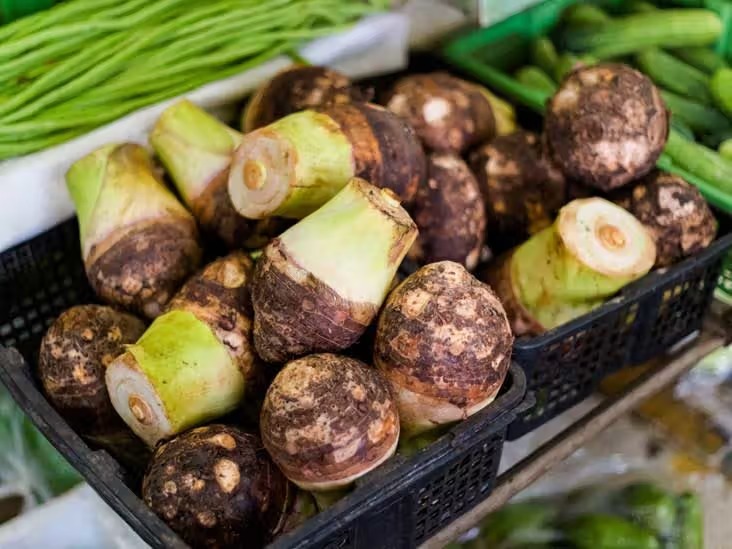
Exploring the world of taro—a humble yet extraordinary root that has shaped cultures for centuries. Known scientifically as Colocasia esculenta, taro is more than just a starchy staple. It is a nutritional powerhouse, a culinary chameleon, and a cultural icon. From tropical rainforests to contemporary kitchens, this versatile tuber continues to inspire both tradition and innovation.
The Taro Root: A Nutrient-Loaded Wonder
Taro stands out among root vegetables with a nutrient profile that rivals many modern “superfoods.”
- Fiber-rich – Supports digestion and gut health
- Vitamin C & E – Strengthens immunity and promotes healthy skin
- Potassium & Magnesium – Supports heart health and muscle function
- Low Glycemic Index – Provides steady energy without sharp blood sugar spikes
A Culinary Chameleon
With its subtly nutty, slightly sweet flavor and creamy texture, taro adapts beautifully to both savory and sweet dishes.
- Savory Favorites: Stews, soups, mashed taro, crispy fries
- Sweet Treats: Bubble tea, taro ice cream, custards, cakes
- Global Inspirations: Poi in Hawaii, taro chips in the Pacific, fragrant curries across Asia
Purple-fleshed varieties add vibrant color, while beige roots provide comforting, earthy flavors—making taro a star ingredient in everything from vegan curries to artisanal desserts.
Beyond the Root: The Power of Taro Leaves

The plant’s heart-shaped leaves are rich in vitamin A, vitamin C, and antioxidants, offering a nutritious, sustainable green.
Popular Leaf-Based Dishes:
- Callaloo in the Caribbean
- Laing in the Philippines
- Coconut-based curries in Southeast Asia
Tip: Always cook taro leaves thoroughly to neutralize natural compounds that may irritate the throat.
Growing Taro: Sustainable and Beautiful
Thriving in wetlands and tropical climates, taro is not only vital for food security but also easy to cultivate.
Benefits for Growers:
- Low maintenance with high yields
- Suitable for backyards and containers
- Adds lush, tropical beauty as an ornamental plant
How to Start Cooking with Taro

- Boil & Mash: A creamy, nutrient-rich alternative to mashed potatoes
- Bake or Fry: Turn into chips, wedges, or fritters
- In Desserts: Smoothies, puddings, cakes, and bubble tea
- Pair with Coconut: A classic flavor combination in many tropical cuisines
Pro Tip: Always peel and cook taro before eating to reduce calcium oxalate, which can irritate the mouth and throat.
Why Taro Belongs in Your Kitchen
Taro is not just another vegetable—it is a story of resilience, nourishment, and tradition. With its impressive nutrition, cultural depth, and culinary versatility, this ancient root bridges past and present while enriching both diet and lifestyle.